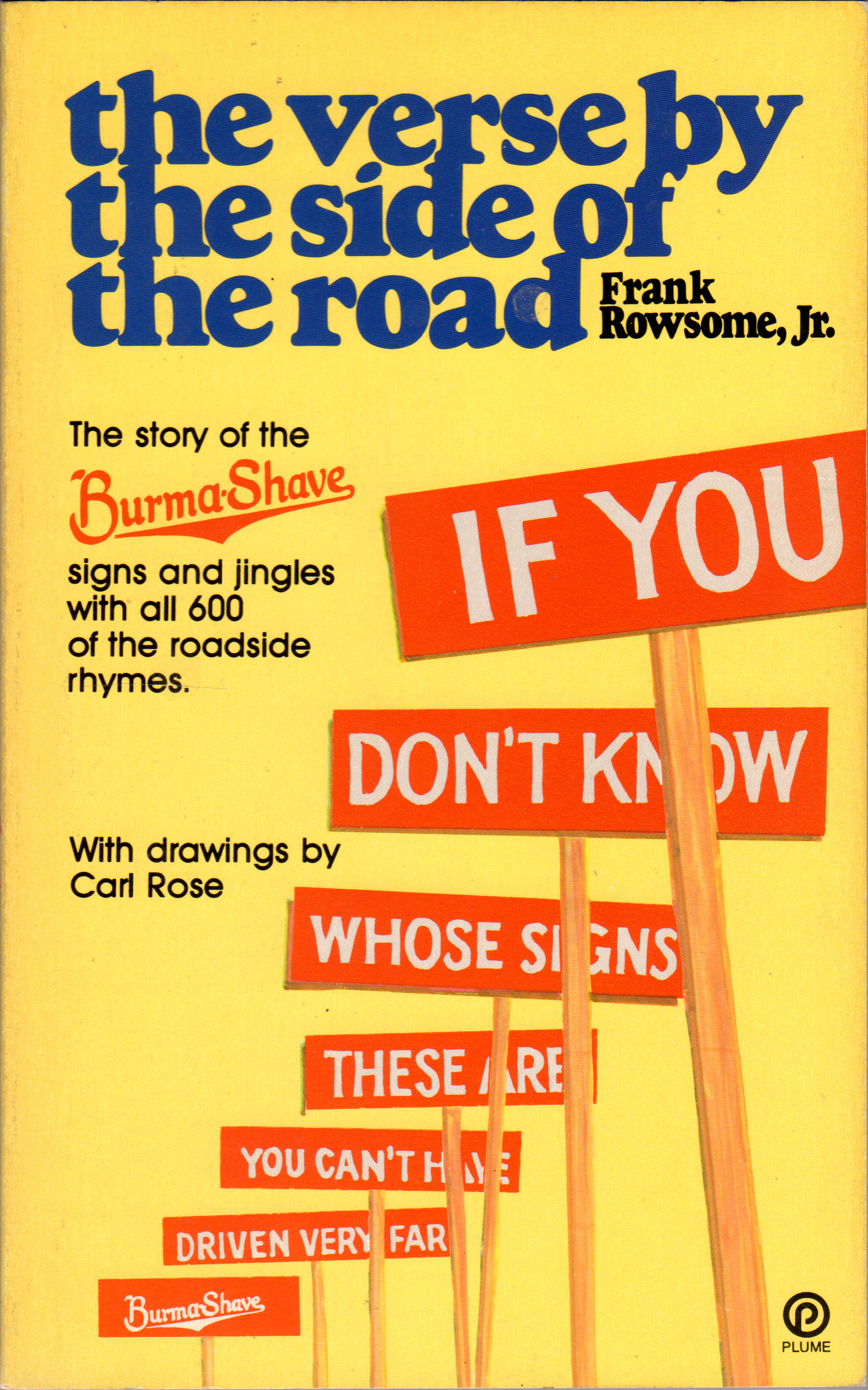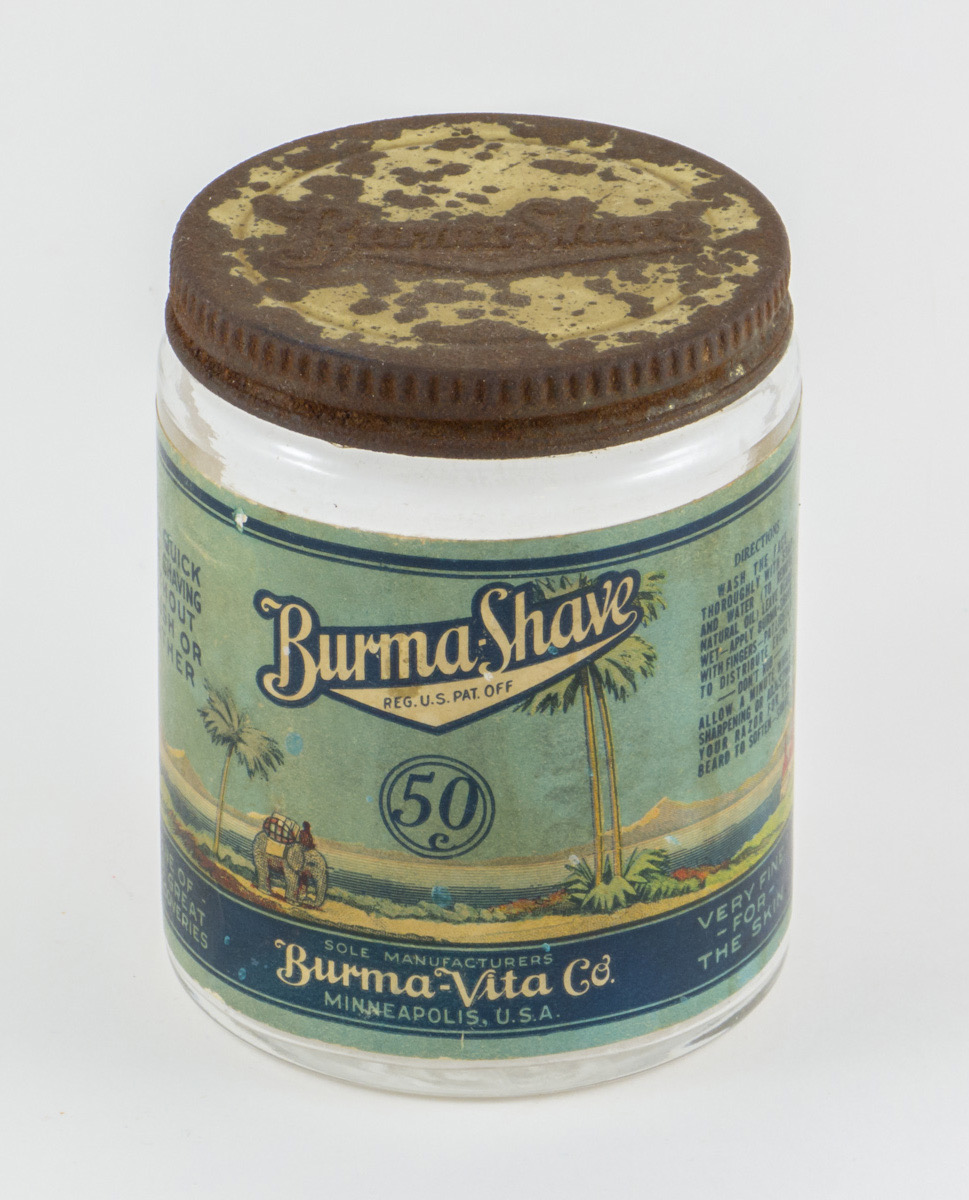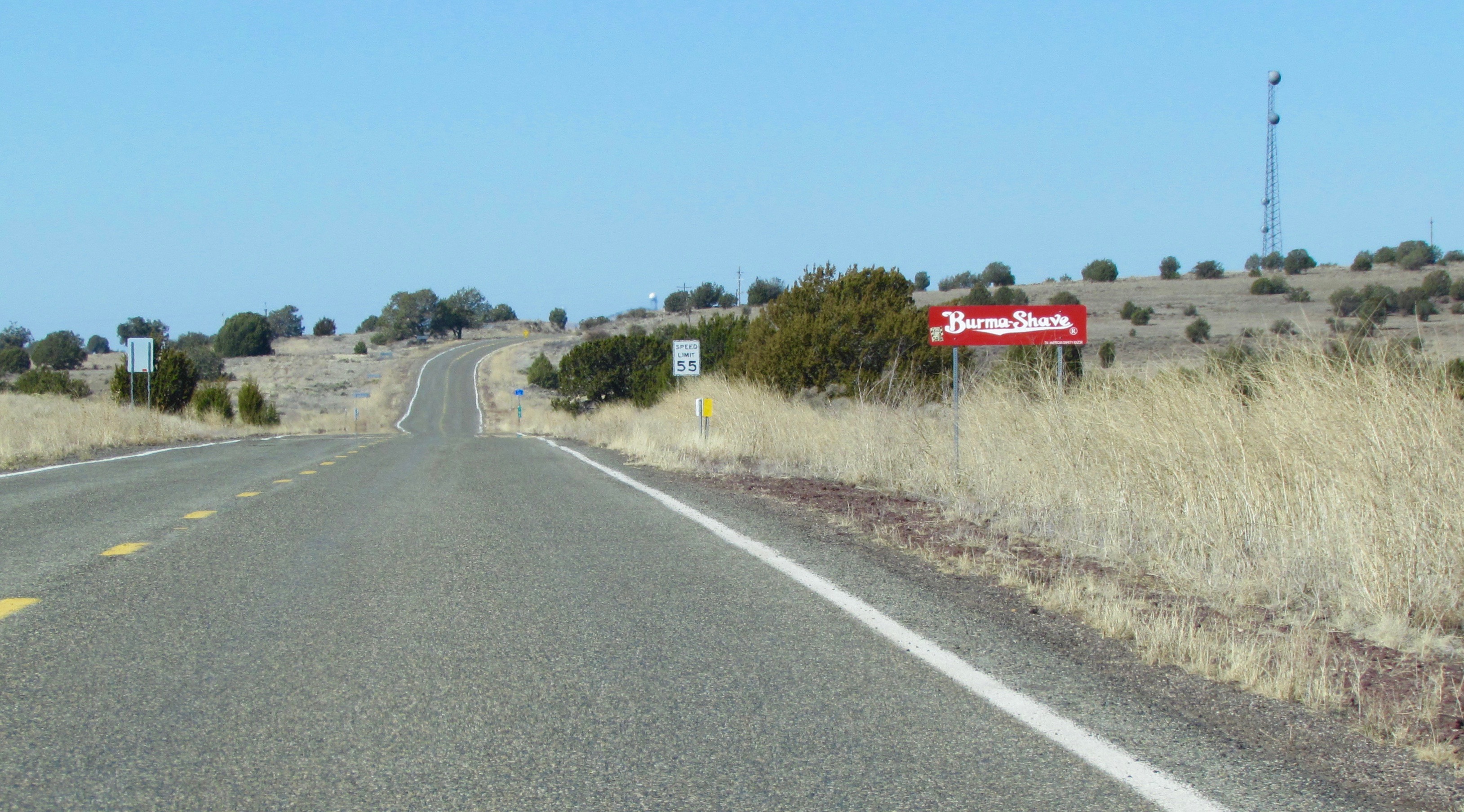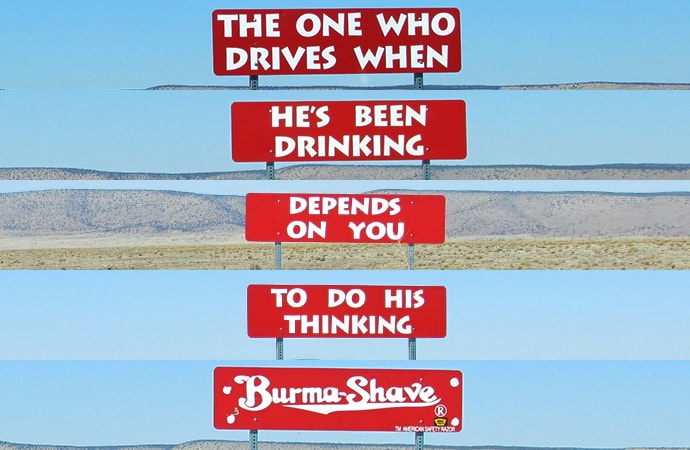
Editor’s note: This piece is part of the ClassicCars.com Journal’s Road Trip Month. We’ll be celebrating anything that helps pass the miles and the cars that get us there during the month of June.
Leonard Odell was the grandson of a lawyer who made Malaysian liniment for a little extra income. He called it Burma-Vita. Every rural family knew what liniment was for and Burma implied an exotic source of the main ingredient. Vita suggested it had an effect on life for a broad range of ailments.
The family’s agent at the local wholesale drug company, from whom it procured the ingredients for the liniment, suggested Burma-Vita should formulate something that families could use all the time, not justwhen they were ailing. The agent gave the Odells a tube of English ‘Lloyd’s Euxesis,” the original brushless shaving cream, as an example.
Noren, a Minneapolis druggist contracted an seemingly untreatable ailment that compelled him to move to Tucson, Arizona for “the sunshine cure.” Upon his successful recovery and return to the north country, he contacted his old friends at Burma-Vita Company, hoping for employment. Leonard handed him a tube of Lloyd’s Euxesis and asked if he could concoct something less gooey that would function as a brushless shaving cream.
Noren ordered the ingredients he thought would work. At 3:00 p.m. of the day they arrived, formulation No. 1 came off the stove.

“Frankly, terrible stuff,” Leonard recalled years later. At formula 143, Burma-Vita had a stable product. At about the time test batch 300 was being tested, Leonard discovered a small quantity of batch 143 on the shelf. It had aged about three months and delivered a fine shave. Eureka! That formula was put into production with a three-month aging process before it was packaged.
One day Al Odell was driving between Joliet and Aurora in Illinois and noticed a series of small signs advertising a gas station: GAS / OIL / RESTROOM / and such, about a dozen of them. The last one pointed at the gas station. Others in the area had copied the idea. Al thought: “Every time I see one of those setups, I read every sign. So why can’t you sell a product that way?”
By the fall of 1925, Burma-Shave signs began with thin brass stencils on scrap wood, no rhymes or jingles, only simple prose:
SHAVE THE MODERN WAY
FINE FOR THE SKIN
DRUGGISTS HAVE IT
BURMA-SHAVE
The Odell team made 10 sets. They got permission from farmers for strips of land along two roads out of Minneapolis; Route 65 to Albert Lea and along the road to Red Wing. Al remembered digging postholes 3-feet deep to securely set the signs. By the start of 1926 repeat product orders were coming from druggists serving people who drove those roads.
Leonard told Allan, “This is a great idea. It’s tremendous! The only trouble is, we’re broke.” Leonard quickly incorporated and went out to sell 49 percent of the stock.
He had a company without revenue, a product no one had ever heard of, much less believed in, and an advertising idea that ad men assured him would not work. But throughout his business life he had established himself as a man of character who could be trusted. The stock was sold in three weeks.

Six small messages, planted 100 paces apart. At 35 mph it took about three seconds from sign to sign; about 35 seconds; more time than a magazine advertiser could realistically expect from even a full page. In those 35 seconds you could be moved to chuckle and recall the rhyme when you got home.
HIS FACE WAS SMOOTH
AND COOL AS ICE
AND OH LOUISE!
HE SMELLED SO NICE
BURMA-SHAVE
Alexander Woolcott, an American critic, essayist for The New Yorker magazine and a member of the legendary Algonquin Round Table, observed, “It was as difficult to read one Burma-Shave sign as it was to eat one salted peanut!”
During the decade following the first installation, sales climbed steadily. By fall of 1926 they had gone from zero to $68,000 with $25,000 spent on signs. After 1927 sign costs went to $45,000 and gross sales were doubling annually.
Looking back Carl Noren remembered, “After ‘The Crash’ we were grossing over $3,000,000 annually. We never knew there was a depression.”
When a Burma-Shave rep would approach a farmer, present him a jar of the product and show him a handsome red sign, he would make his inquiry, “How’d you like to have a set of these signs put up along the fence there?”
The popular signs were no mystery and the response was frequently, “How much is it going to cost me?” That was a good place to begin negotiations. Most of the farmers were proud of those signs and lease contracts were renewed for decades.
Clinton Odell (Leonard’s father) promoted the first public service jingle in 1935:
KEEP WELL TO THE RIGHT
OF THE ONCOMING CAR
GET YOUR CLOSE SHAVES
FROM A HALF-POUND JAR
BURMA-SHAVE
The idea grew quickly, but finally, going dry of jingles, he invited the public to submit suggestion. Finalists received $100. Tens of thousands arrived. Clinton would head up to the family cabin and read for weeks. Finally a couple of temps were hired to read and critique so he could come home to work.
A 1938 $100 winner from Nebraska:
DON’T TAKE A CURVE
AT 60 PER
WE HATE TO LOSE
A CUSTOMER
BURMA-SHAVE
By 1939 the highway safety theme was securely planted. A woman from Illinois sent:
HARDLY A DRIVER
IS NOW ALIVE
WHO PASSED ON HILLS
AT 75
BURMA-SHAVE
Then the war — more laudable patriotism than memorable verse:
LET’S MAKE HITLER
AND HIROHITO
LOOK AS SICK AS
OLD BENITO
BURMA-SHAVE
“Dad felt that we’d grown to be part of the U.S. roadside,” Leonard explained, “and had a duty to do what we could about the mounting accident rate.” There were lots of public service jingles at the end of the ‘30s. And even more war/patriotism sets through the’ 40s.
Letters and testimonials from safety officials and highway commissioners pleased Clinton. A Pennsylvania study delighted him even more: “…no phenomenon slowed down speeders more reliably than a set of Burma-Shave signs.”
SLOW DOWN, PA
SAKES ALIVE
MA MISSED SIGNS
FOUR AND FIVE
BURMA-SHAVE
Allan’s son George’s graduate school dissertation title was, “The Burma-Vita Company and its relationship to Twentieth-Century America.”
“… there was typical western humor of exaggeration, traceable back to Mark Twain, Josh Billings and Bret Hart. It found sympathetic responses everywhere west of the Mississippi. The consistent use of slang and colloquialism, “ George wrote, “was comforting to viewers; it was reassuring to find a chatty, familiar jingle on a road miles from home.”
And then it wasn’t.
Super highways to destinations eliminated the two-lane adventures to somewhere not yet discovered. By the early ‘60s the costs of signs topped $200,000 and an expanding line of products were not an advantage to the bottom line. On January 7, 1963, it was announced that Burma-Vita was sold to
Bov Swift of Knight News Service wrote a lovely, evocative review of The Verse by the Side of the Road: “Rowsom’s volume indexes each of the 600 jingles… and as you go down the list, preferably reading aloud, it might evoke visions of 1940 Chevies, roadside diners, signs that said EATS.
“…Why were Burma-Shave jingles so universally loved? Because they were light-hearted and humorous in hard times and war times.”
Bob Dole served as the U.S. Senator from Kansas from 1969-1996. He wrote the Foreword: “No doubt about it, the hypnotic attraction of the ‘verse by the side of the road’ was irresistible. Once that first Burma-Shave sign came into view you were hooked, all the way to the tantalizing punch line … Growing up on the high plains of Kansas during the dust bowl years, I still remember the signs. They were as much a part of the scenery as the wheatfields and cattle.”
Once there were 35,000 Burma-Shave signs posted, but sightings have become rare (though some have been reproduced, such as along the Arizona section of old Route 66). Gone, perhaps, but not forgotten.
“More meaningful,” wrote Frank Rowsome, “is the fact that the little red signs still exist, very much alive, in thousands of memories.”

Reviewed
The Verse by the Side of the Road: The story of the Burma-Shave signs and jingles with all 600 of the roadside rhymes
By Frank Rowsome Jr.
Plume, 1979
ISBN: 978-0452267626
Softcover, 128 pages
$15






I just discovered this article, which includes two of my photos of Burma-Shave products in my collection. I don’t mind at all that you used them, but it would have been nice if you’d given me credit for the photos.